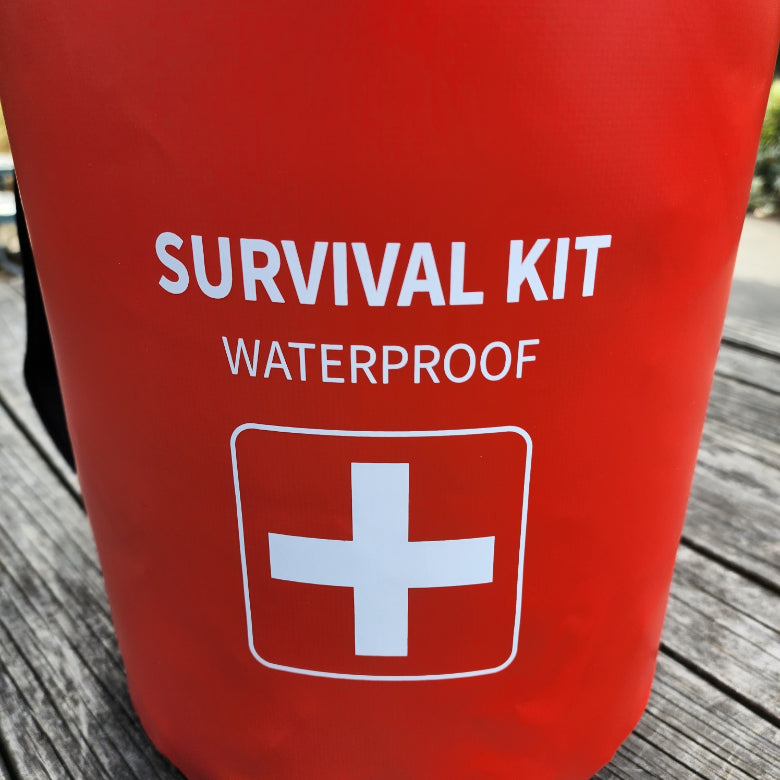
HOW TO MAKE A HOME EMERGENCY KIT | SURVIVAL KIT | NEXT72HOURS
Share
How to make a Home Emergency Kit | Building Your Home Emergency Kit
Putting together a home emergency kit is an essential thing for every New Zealand household. When it comes to Emergency Kits, you can either buy one off the shelf, or you can put your own kit together. There and pros and cons for each of these options. A premade kit is a quick and easy option, saving time and stress, but they can be expensive and historically, some of the kits on the market have been very poor quality. the other option is to build a kit on your own.
If you want a good basic check list of what you will need in your kit you can click on this link and print off a pdf file and tick it off as you put all the items together. You may find that you have any of these items in your household already, and if you don't you can simply add them as time and finances allow. You can also visit the getready.govt.nz where they go into this in more detail. A good survival kit, grab bag or Home Emergency Kit is an essential must have in this ever changing world.
What do I need in a Home Emergency Kit | Survival Kit | Grab Bag
Bottled Water and Emergency Food:
Water: Water is one of the most essential items you need to prepare. You can go a long time without food, but only three days without water. Store at least 9 Litres of Water per person for a 72 Hour Period, or three litres per day.
Food: While you can go a while longer without food than you can without water, having a supply of long life, non perishable food, is also essential. Having foods that you know you will enjoy is essential, don't wait for a disaster to discover you dislike something. If you are storing canned goods, then don't forget the manual can opener.
Light and Communications:
Torch / Headlamp: A good torch is essential during a disaster. You never know when disaster will strike, you may need to find you way out or around the house in darkness. A good IPX rating is important, and ensure you have access to extra batteries. Consider a power bank if you have a rechargeable torch.
AM/FM Radio: AM/FM radio will be on of the primary sources of emergency updates during a disaster. A good radio is essential to be able to get these updates. Ensure you have extra batteries on hand.
First Aid Kit: Include all the basic first aid supplies such as bandage, pain medicines and any specific medical supplies or medical equipment your family members may need. Hospitals will likely be overrun with patients and chemists may be closed for some time.
Sanitation and Hygiene: Proper hygiene is essential during a disaster, add a good hygiene kit and don't forget the toilet paper and any personal hygiene items you may need. Large plastic bags can be used as an emergency toilet if the sanitation services go down. Ensure you have hand sanitizer in stock also. Don't forget a good pair of Gloves to protect you hands.
Important Documentation: Keep copies of important documents on hand, such as medical information, ID's, insurance documents and keep these in a waterproof container of some sort. Keep a copy of your Emergency Plan in the kit also.
Emergency Cash: During a major disaster, power will likely go out which means ATMs will also be down as will EFTPOS machines and banks. Having a small supply of cash on hand will allow you to purchase some essential items as needed.,
Special Needs: If you have children or pets, then don't forget pet food and baby supplies. Consider extra clothing and a set of good walking shoes. You may have to walk a long distance to get home or get to help, depending on the roads at the time.
Tips for Putting Your Emergency Kit Together
Use what you have on hand: In these tough times, it is essential to consider costs, you may already have some of these items at home.
Purchase over time: While now is the best time to have a kit ready to go, if money is a consideration, then spready your purchased out over time, add a few items to the shopping list each time until you have the kit ready to go.
Know where your kit is: Keep you kit in a location where it can be found and accessed no matter what is happen, and ensure everyone in the household knows how to access it.
Check your kit and keep it updates: Go through your kit on a regular basis, ensure your food and water is in date, and update the kit as your situation changes.
Customize your kit: Check out your local Civil Defence Page or the NEMA website, and determine what the greatest risks are in your area. Make sure your kit meets the specific needs in the area you live in.
By following these steps, you'll be prepared for unexpected situations and have peace of mind knowing you're ready to handle them.






